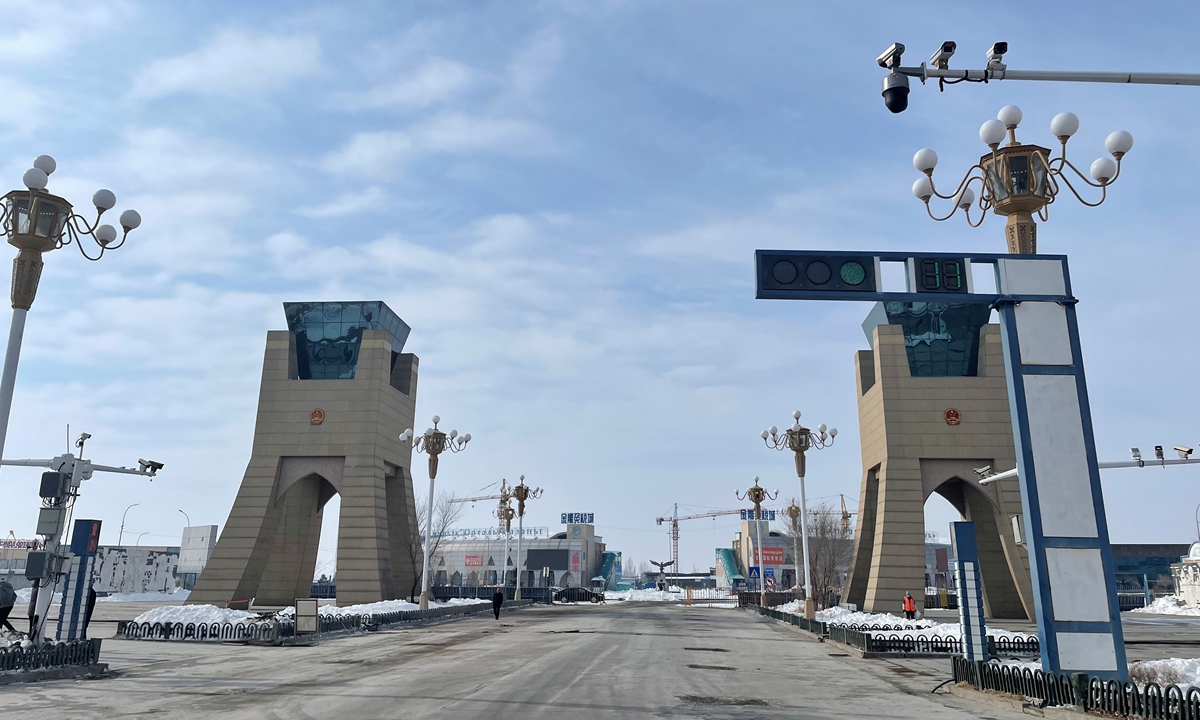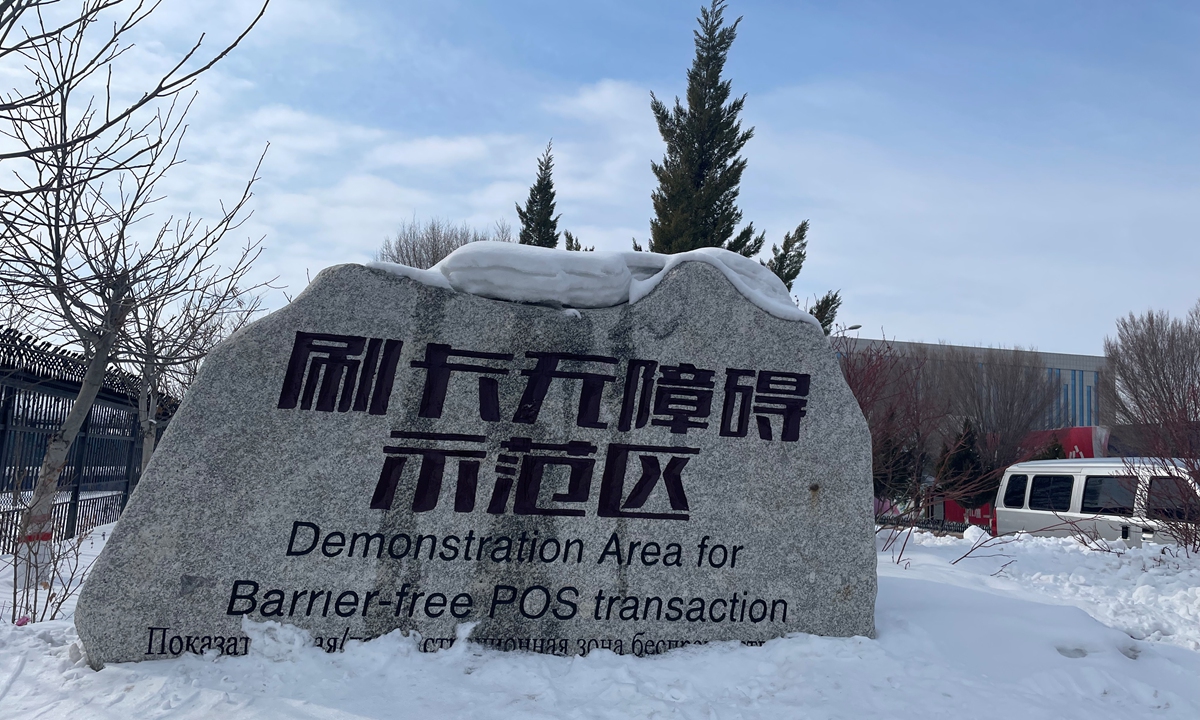
Pictured is China's first cross-border free trade zone that straddles the border between China and Kazakhstan in Horgos, Northwest China's Xinjiang. Photo: Liu Caiyu/GT
China's first cross-border free trade zone, which straddles the border between China and Kazakhstan in Horgos, Northwest China's Xinjiang Uygur Autonomous Region, is scheduled to hold 30 international activities this year to attract investment and tourists, in a bid to drive border trade after three years of downturn.
Activities in the China-Kazakhstan International Cooperation Center will start from March and include jewelry exhibitions, car exhibitions and Belt and Road Initiative (BRI) financial forums. At least two activities are to be held each month, the Global Times learned from Horgos' foreign affairs office.
Wang Heping, director of the center office, said that development momentum for the free trade zone will be very strong this year. "Good signs have already emerged since the country downgraded its COVID-19 management. Tourists are returning to scenic spots. Now it is the time for fresh growth.
The center is positioned as a gateway for international trade linking the east and the west, and a bridgehead for Xinjiang region to open up to the west. It's the first trans-border international free trade zone in the world, and also China's first special economic zone, being "within the country, but out of the jurisdiction of its customs."
It covers 5.6 square kilometers, with 3.43 square kilometers on the Chinese side and 2.17 square kilometers on the Kazakh side. Nationals of both countries as well as third countries can enter the zone for business purposes with valid documents such as passports or entry and exit permits.
Simply using a Chinese identity card, a Global Times reporter applied for a temporary entry and exit permit at the customs inspection hall, which costs 15 yuan ($2.2).
"The free trade zone remained in operation during the epidemic but so far the Kazakh side has not resumed operations. We're devoting efforts to bringing back our merchants and increasing the vitality of the free trade zone as soon as possible," Wang noted.
If the border along Kazakhstan can open normally in March, the zone will soon return to its level before the epidemic, Wang said. He admitted that though sufficient preparations have been made for the trade zone, it will take time for a full recovery.
On the Chinese side, there are modern and tall buildings and cross-border commodity shops, with tourists coming to buy duty-free goods. Some shop owners eagerly reopened after January 8 when China downgraded its COVID-19 management, but some have yet to reopen.
The Kazakh side remains relatively bleak with businesses remaining shut, because the country has not reopened its border.
To push the early and complete opening of the zone from both sides, Horgos and Kazakh representatives have holding discussions, either face-to-face or online, the Global Times learned.
The Chinese side has also proposed setting up a joint team to serve as a bridge for easier coordination, and the integration of more resources for better operation of the free trade zone, according to Wang.
"It won't take long to see visitors in the stores and lining up to check out at counters. The turnover this year is likely to be 100 million yuan ($14.6 million), the same as the level prior to the epidemic," said Hu Jinyun, who runs a duty-free store within the free trade zone.
Hu is originally from East China's Zhejiang Province, and he invested 50 million yuan in the duty-free store in 2016. The local government offered relief on his annual rent of 2.3 million yuan for three years as part of efforts to support local businesses during the epidemic-related downturn.
In 2019 prior to the epidemic, the total number of inbound and outbound visitors from the Chinese side reached 6.59 million, and customs-cleared trade reached 10.485 billion yuan. In 2022, the total number of inbound and outbound visitors was 851,600, and customs-cleared trade was 2.48 billion yuan.
To seek opportunities in the post-epidemic era, Wang has also led teams to Beijing and other cities to attract investment. The official said the China-Kazakhstan International Cooperation Center implements a "negative list" approach for the administration of investment nationwide.
With the deepening implementation of the BRI and opening-up of Xinjiang, the construction and operation of the Cooperation Center have entered the fast lane. Relying on the unique advantages of its location, special policies and openness, the zone facilitates foreign trade, duty-free shopping, offshore finance, cross-border tourism and international exhibitions.
A total of 35 key projects with a total investment of more than 30 billion yuan have been established in the center, of which 15 have been completed and put into operation. More than 3,500 businesses have settled in the center.
Wang said hopefully, the development of the zone could set an example for other cross-border economic and trade cooperation zones.

Photo: Liu Caiyu/GT





